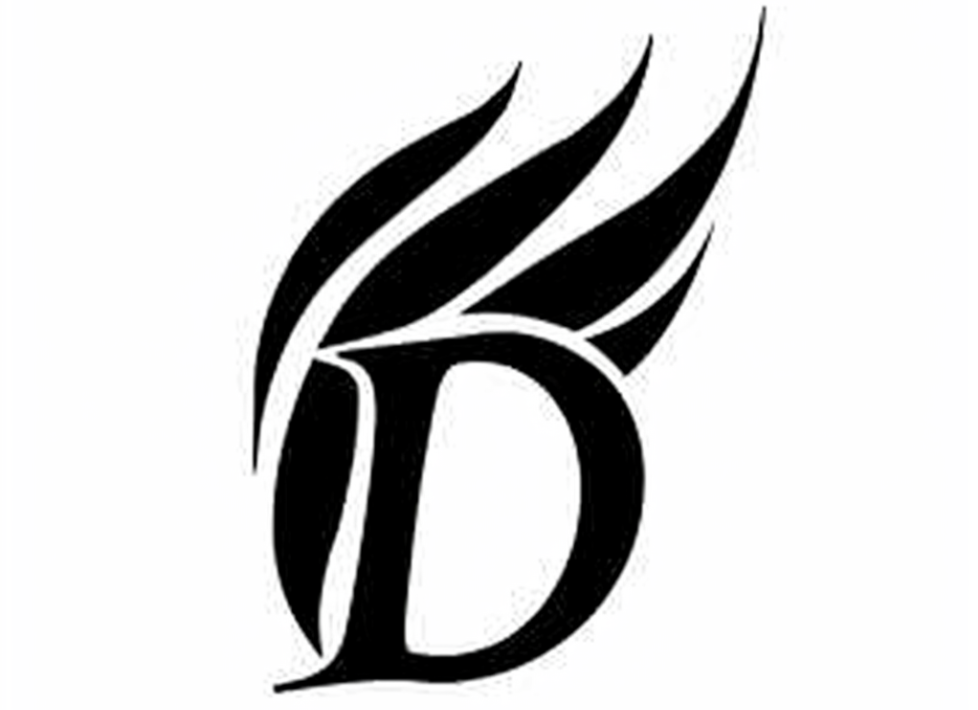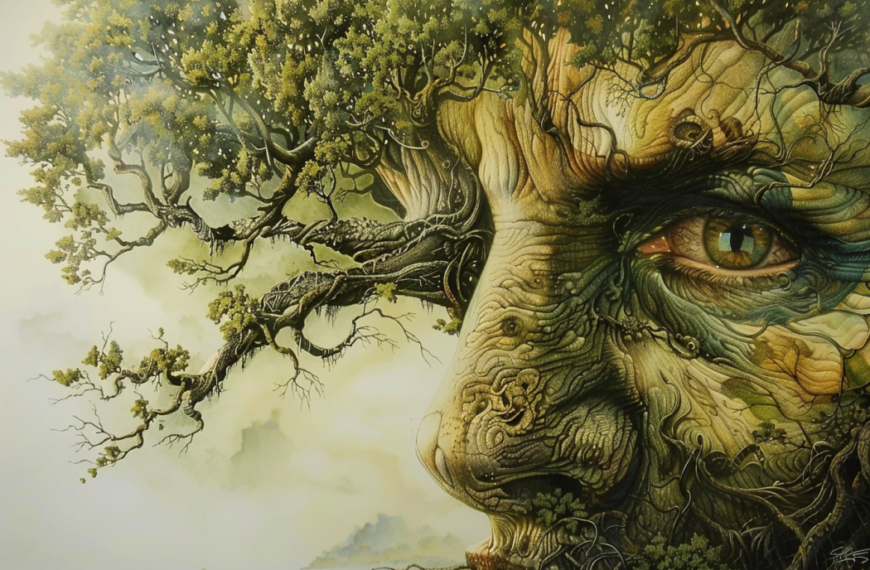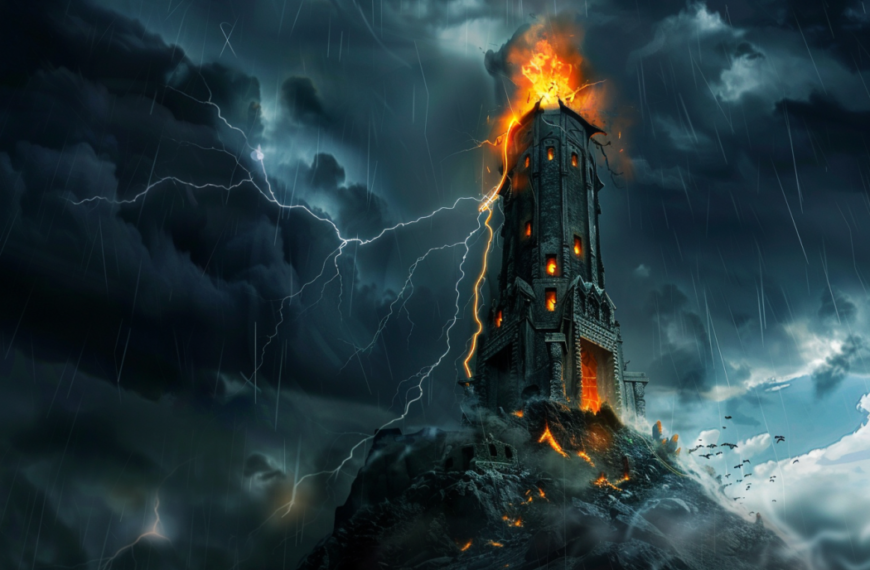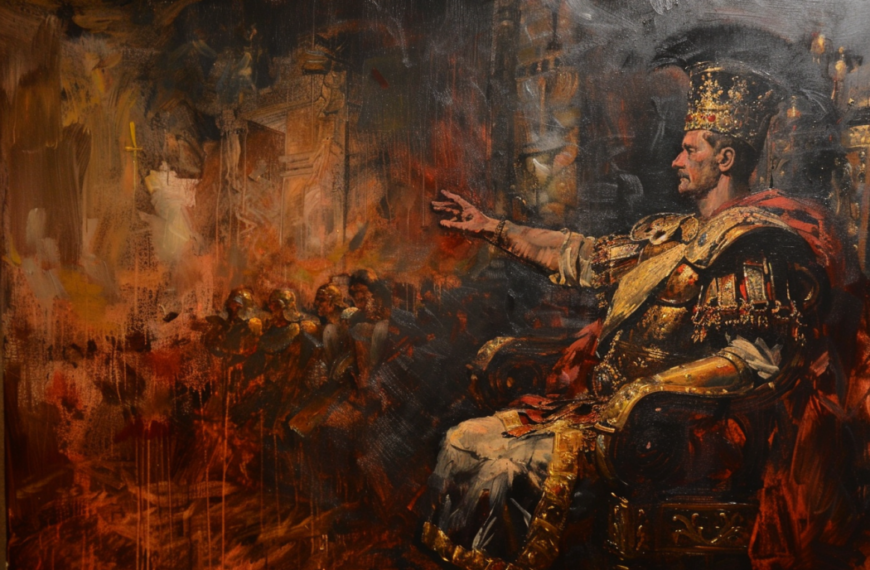30 Symbols Of Death And Their Meaning
The mystery of death has fascinated people for centuries. Different cultures have developed different ways of understanding death, and these understandings have been reflected in the symbols that they have used to represent death. These symbols of death are powerful way to help people to come to terms with the inevitability of death in this fleeting life.
In this article, we will explore 30 popular symbols of death around the world, uncovering its fascinating meaning in societies and cultures throughout history. Moreover, we’ll investigate the spiritual importance attached to death and these symbols.
- 1. The Grim Reaper
- 2. The Skull
- 3. The Hour Glass
- 4. The Coffin
- 5. The Tombstone
- 6. The Vulture
- 7. Skeleton
- 8. Dead Tree
- 9. The Black Cat
- 10. The Mourning Dove
- 11. The Owl
- 12. The Bat
- 13. Ouroboros
- 14. The Noose
- 15. The Cross
- 16. Extinguished Candle
- 17. The Mirror
- 18. The Snake
- 19. Rotting Flesh
- 20. Blood
- 21. The Black Butterfly
- 22. The Wanning Moon
- 23. The Funeral
- 24. The Plague Doctor
- 25. Phoenix
- 26. Crows & Ravens
- 27. Scythe
- 28. The Color Black
- 29. Poppy
- 30. Stairway to Heaven
- Conclusion
- Related Posts
1. The Grim Reaper
For centuries, people have imagined death in different ways. One of the most common images is the Grim Reaper, a skeletal figure wearing a dark robe and carrying a scythe. The Grim Reaper first appeared in Europe during the 14th century, a time when the Black Death was ravaging the continent. The plague killed millions of people, and the Grim Reaper became a symbol of death and destruction.
The skeletal figure of the Grim Reaper represents the human body after death. The dark robe is reminiscent of the robes worn by religious figures at funerals. The scythe is a symbol of death because it is used to harvest crops, and humans are often seen as “crops” that are inevitably harvested by death. Despite their terrifying association and appearance, The Grim Reaper can sometimes be seen as a guide who escorts the souls of the dead to the afterlife, providing comfort and help them accept the impermanence of life.
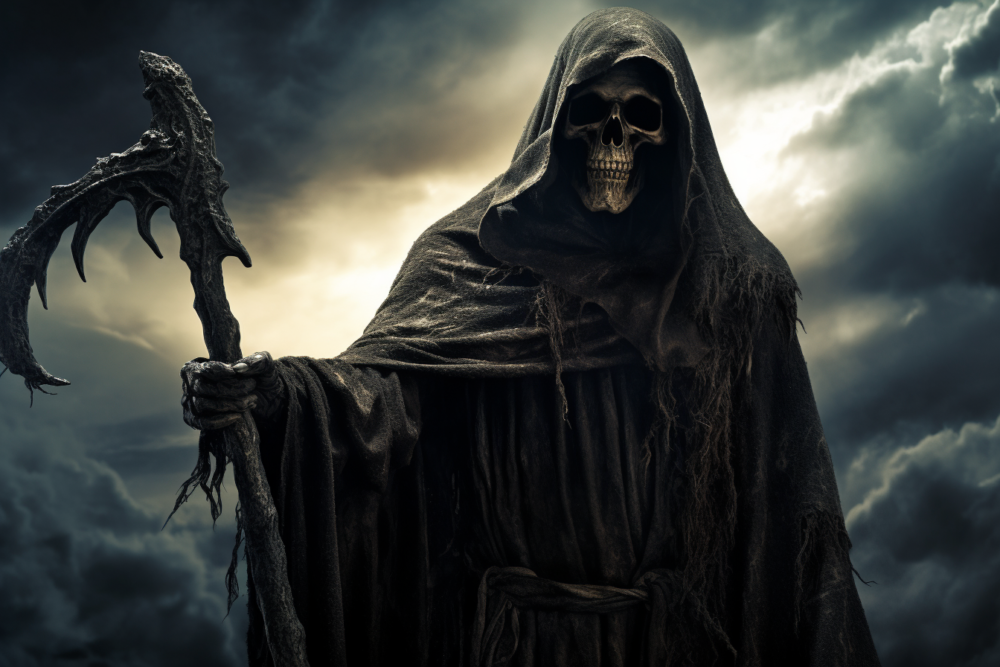
2. The Skull
The skull has been significant in religion, art, and decorative design throughout history. Despite varying cultural and religious interpretations, it traditionally represents death, fear, and mortality, but can also symbolize protection, power, and gratitude for life. Regardless, it reminds us that death is inescapable.
Some Christian rosaries feature skulls as a reflection of the Latin expression Memento Mori, reminding people to live with knowledge of judgement after death.
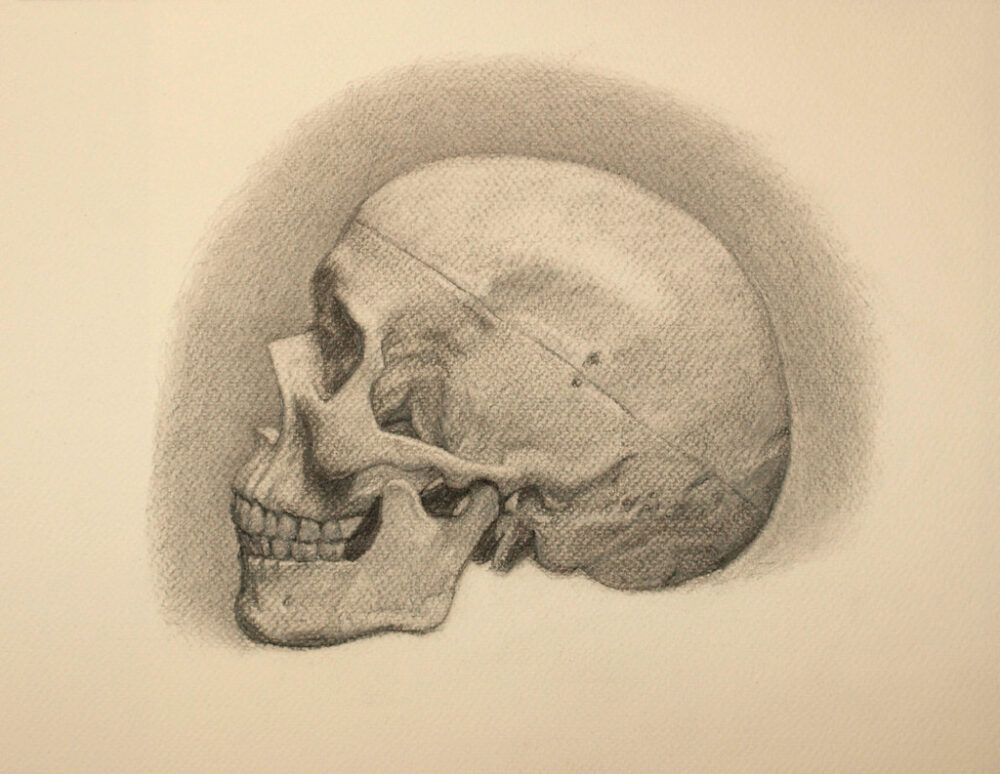
A simple representation of memento mori could be a painted portrait featuring a skull, although other common symbols are also utilized, including hourglasses or clocks, extinguished or flickering candles, fruit, and flowers.
A closely related variation of the memento mori artwork is the vanitas still life. In addition to the mortality symbols, it might also contain other items like musical instruments, wine, and books to explicitly remind us that worldly pleasures and possessions are meaningless, as the term “vanitas” comes from the Book of Ecclesiastes’ opening lines: “Vanity of vanities, saith the Preacher, vanity of vanities, all is vanity.”
Read More: Skull Symbolism: Ultimate Guide
3. The Hour Glass
The flying hourglass represents how incredibly fast time passes during our lives, and that we have enjoyed a very brief and fleeting experience of human existence. It could also mean that the journey to the afterlife is just as temporary as the journey we took in this world.
This symbolism dates back to the 18th century, when it was quite common for people to be buried with hourglasses, indicating that their time in this physical plane had run out. If you look at it from a more Oriental perspective, the hourglass also symbolizes the recurrence of existence since it can be turned upside down to count time again, just like how souls can reincarnate into another body to continue their existence til eternity, learning the lessons they have long forgotten.
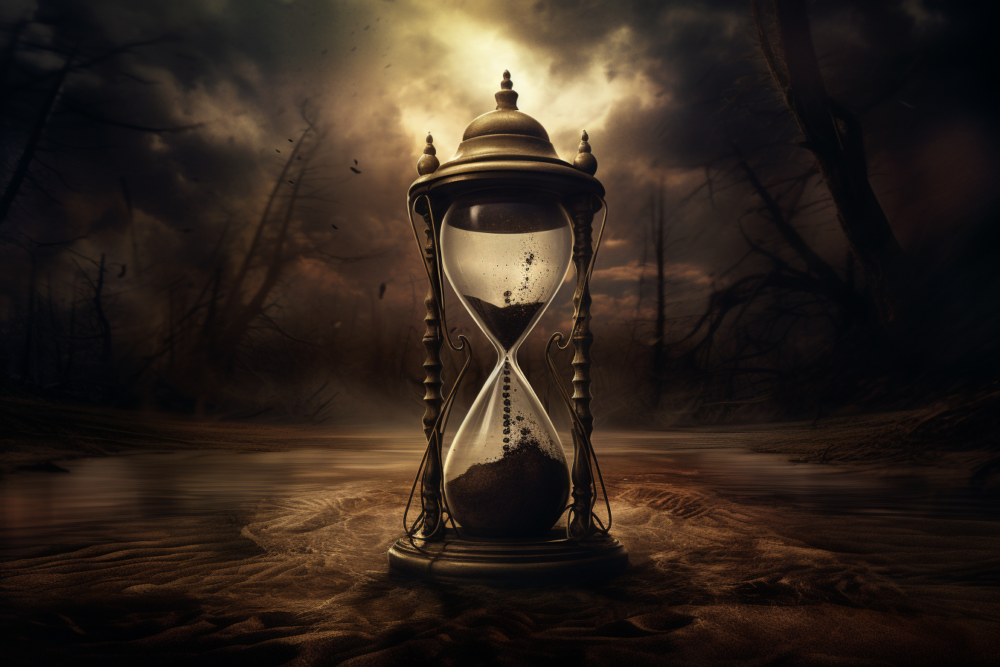
4. The Coffin
Coffins have their meaning deeply rooted cultural, religious, and practical considerations. They provide a respectful place for the deceased where they can eternally rest in peace. Coffins offer a protected and enclosed space to cradle the body, shielding it from the damage of external elements.
The act of building a coffin for the deceased also reflects the value placed on preserving the body and showing reverence towards the departed. In the United States today, memorial services typically involve careful preparation of the deceased, gathering of loved ones for mourning, heartfelt tributes, and personal ways of remembering the deceased.
Not only that, in many traditions, the act of placing the body inside a coffin also signifies a symbolic separation from the living world and a preparation for the spiritual journey or the passage to the next existence. They are a physical boundary between the living and the deceased, allowing the grieving process to unfold with a clear distinction between the 2 worlds.

5. The Tombstone
Throughout history, tombstones have been used to mark graves near homes. Their use became more common in churchyards and cemeteries during the mid-1600s. Initially, headstones were reserved for the middle and upper classes, but they later became a standard part of burials for all when Protestant theology gained wider acceptance.
Not just symbols of death, the tombstone represents the permanence of someone’s legacy. It acknowledges that life is fragile and fleeting, but what a person accomplishes and left for the world will forever be memorialized until generations after.

6. The Vulture
When people spot a vulture circling in the sky, it is often assumed that there is a dead or dying animal below. Vultures are scavengers with a sharp sense of smell that enables them to locate decaying carcasses, – their primary food source. Their excellent eyesight allows them to spot dead bodies, from long distances.
Due to this preference for feeding on carcasses, vultures are naturally associated with death. However, they are not just cold-blooded predators. Vulture play a crucial role in the natural cycle of decomposition. This is why other than being a symbol of death, vultures are also known as symbols of rebirth and protection of souls on the journey across realms of the living and the death.

For example, in ancient Egyptian mythology, the vulture symbolized maternal care and protection. The goddess Nekhbet, represented as a vulture, was revered as the guardian of the pharaoh and the patron of the city of Nekheb. Similarly, in Hinduism, the god Vishnu is sometimes depicted wearing a vulture headdress, symbolizing his role as the preserver and protector of the universe.
In Native American cultures, particularly the Hopi tribe, the vulture carries symbolic meaning as a guardian and purifier. It is believed to possess spiritual power to cleanse the air and bring renewed vitality to the land.
7. Skeleton
Similar to skulls, the skeleton is what was left of a living being after it has already decomposed. The skeleton holds profound symbolism associated with death, decay, and the afterlife. As the bony framework that remains when flesh and organs have deteriorated, the skeleton tells stories of the transience of life.
Skeletons hold a significant place in Mexican culture, particularly during the celebration of Dia de los Muertos (Day of the Dead). In Mexican culture, skeletons, known as calacas or calaveras, are not only associated with death but also represent the cycle of life. Being a family-oriented culture, the Mexicans place great emphasis on honoring their ancestors, believing that death is a natural part of the human experience, but it does not mean the end to all. Rather, the deceased will always be there and grant blessings to generations after.
During Dia de los Muertos, elaborate skeleton imagery can be seen in various forms of art, including colorful sugar skulls, skeleton figurines, and intricately designed skeleton costumes. These vibrant representations of skeletons are meant to evoke a sense of joy and celebration rather than fear or sorrow. Families create altars adorned with skeleton-themed decorations to welcome the spirits of their deceased loved ones during this time. The festive atmosphere and artistic expressions reflect a belief in the continuity of life beyond death.
Beyond Mexican culture, skeletons are also present in art around the world, often serving as symbols of mortality, transience, and the fragility of life. In Western art, the “Dance of Death” motif (Danse Macabre), popular during the Middle Ages, depicted skeletons engaging with people from all walks of life, emphasizing the universality of death.
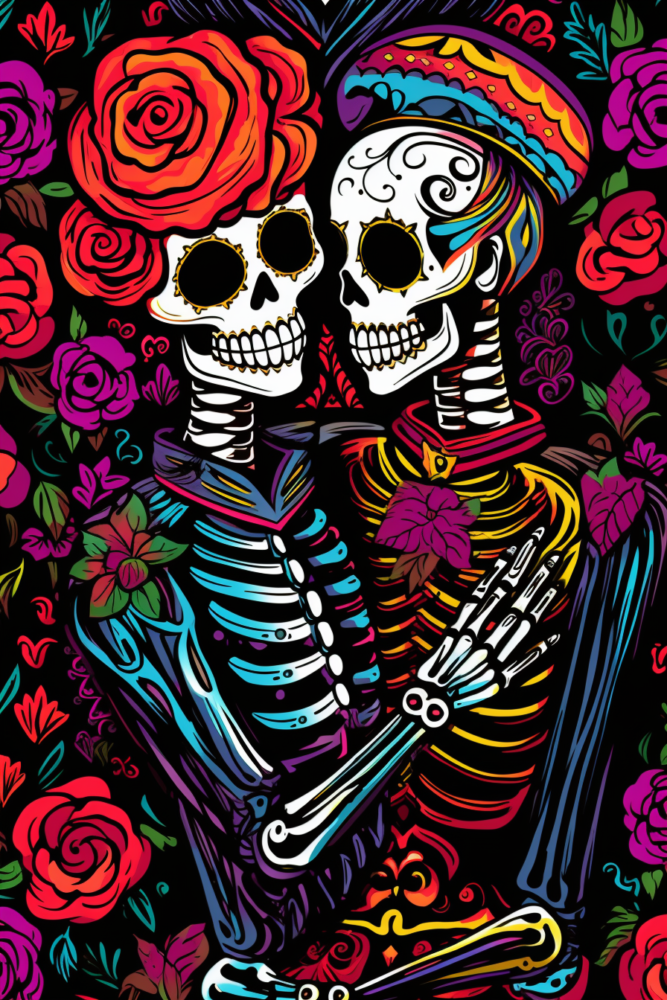
8. Dead Tree
Throughout various cultures worldwide, there is the recurrent concept of a “World Tree”. This World Tree is often viewed as the source of all life or the center of the universe as well as a great witness of all beings whose lives are nurtured by its life-giving nature. Therefore, the sight of a dead tree can be unsettling, contrasting our common association of them with vitality and wisdom (for example: Tree of Knowledge in the Garden of Eden).
Moreover, dead trees are often associated with barrenness and desolation. In landscape where dead gigantic trees stand, the surrounding landscape is usually not too lively. The absence of leaves, flowers, and fruits that once adorned the tree signifies the absence of life and the presence of death, evoking feelings of sadness, grief, and melancholy.

In many cultures and artistic representations, dead trees represent the end of an era, the decay of society or civilization, or the decline of a once-thriving individual or community.
9. The Black Cat
Black cat is more associated with bad luck than with death; in fact, black cats used to be revered in history. The bond between humans and cats can be traced back to ancient civilizations like Egypt, where cats were seen as divine symbols. Greek mythology also mentions cats, with the goddess Hecate depicted as having a cat as a pet and familiar, assisting witches according to European folklore.
Black cats were only started to be associated with death and bad omen in the 13th century, when written records connect black cats to the occult. Pope Gregory IX issued a church document called “Vox in Rama” on June 13, 1233, declaring black cats as an embodiment of Satan. This decree marked the beginning of inquisitions, witch hunts, and the persecution of heretics. Initially aimed at suppressing the cult of Luciferians in Germany, it quickly spread across Europe.
In medieval Europe, black cats became closely associated with witches. Witches were the pagan practitioners of pre-Christian Europe, and as the Christian church gained power, it viewed witches as competitors for the people’s loyalty. Consequently, the church began hunting, persecuting, torturing, and killing witches on a large scale.

The image of an old lady with her cats came to be viewed with suspicion. The early Christians feared both witches and cats as they exhibited a healthy disrespect for authority. Cats, unlike dogs, did not blindly obey, and independent women and animals were not tolerated within the church.
During the Middle Ages, cats were frequently killed due to their perceived association with evil. Some even blamed cats for spreading the Bubonic plague, providing an additional reason to eliminate them. However, this misguided action backfired. Ironically, by reducing the number of cats that could control the rodent population, the killing of cats actually facilitated the rapid spread of the plague (which is another major event associated with death).
10. The Mourning Dove
The mourning dove holds significant spiritual meanings in various Biblical stories, particularly representing hope from the dead. When a dove appears to someone who is mourning, it is often interpreted as a visitation from their departed loved one. This encounter brings a message of hope and encouragement to the grieving individual. Some also believe that the mourning dove serves as a messenger from angels, spirit guides, or even God.
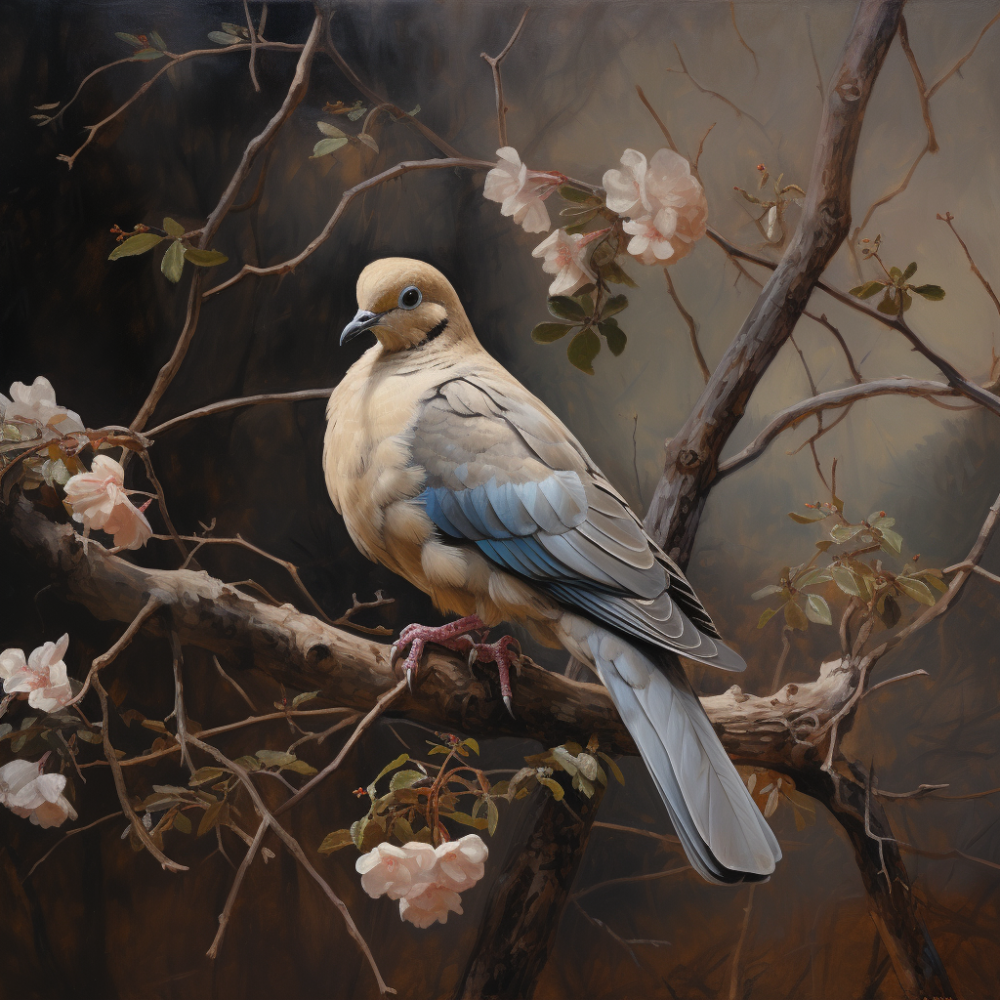
In the story of Noah’s Ark and the Great Flood, as recounted in the Bible, Noah releases a dove from the ark after the rain ceases. He hopes that the dove will find dry land and not return. Prior to this, Noah had sent out a raven, but it came back to the ark. To Noah’s surprise, the dove returns with an olive leaf in its beak, indicating that the waters have receded. This act of the dove carrying the olive leaf becomes a powerful symbol of hope and the beginning of a new chapter.
In a way, the mourning dove carries a much more positive and uplifting meaning, where death is simply the opportunity to begin something better. The Great Flood has brought great destruction, but it was where new humanity arises, and the mourning is the bridge of the two worlds.
Read more: Dove Symbolism & Meaning: Ultimate Guide
11. The Owl
In ancient Rome, the hoot of an owl was considered a sign of impending death. According to reports, several Roman emperors, such as Augustus and Julius Caesar, had their deaths predicted by the presence of an owl. However, another Roman belief suggested that death could be averted by nailing a dead owl to the door of one’s home, which was believed to ward off evil.
Children are often associated with negative encounters involving owls. The Malayan people from the South Pacific believed that owls would steal newborn babies through their bedroom windows at night. In German superstition, the hooting of an owl during a baby’s birth was believed to bring a life filled with unhappiness. The Greeks were also wary of owls, considering them to be witches capable of shapeshifting and sucking the blood of children.
Read More: Owl Symbolism Around The World
Owls hold significance in many Native American stories. In some cultures, owls are closely linked to the tribe’s medicine men, who are believed to communicate with and transform into owls. However, evil medicine men can also shapeshift into owls and use them to bring curses, diseases, and death to rival tribes. Consequently, many tribes traditionally do not trust owls. Interestingly, the Cherokee language uses the same word, “skili,” to refer to both witches and great horned owls.

12. The Bat
Bats are often associated with death and have been used as a symbol of death, stemming from their nocturnal nature, their appearance as mysterious creatures, and their association with darkness and the supernatural.
In some beliefs, bats in the attic predict a death in the house. They can also symbolize death if they fly over a house, appear at a window, or enter through a chimney. For example, a tale from western New York suggests that if a bat flies around a house while a dog is howling, it signifies an impending death. Dreaming of bats flying inside the house is said to indicate the death of a close friend.
Different beliefs exist regarding how to prevent or interpret the consequences of encountering a bat. Some people believe that killing a bat can prevent death, while others believe that killing a bat will bring about a person’s demise, while only causing illness if the bat escapes. In Ohio, a Scottish tradition suggests that if a bat flies through a doorway, one can avoid serious illness by drinking a mixture of burned hair and coffee. Another remedy from Arkansas suggests that placing a horseshoe in the fireplace can scare bats away and avoid the issue altogether.

13. Ouroboros
The renowned psychologist Carl Jung interpreted the ouroboros as a fundamental symbol of the human mind. According to Jung, it represented our capacity for self-renewal through introspection. He recognized the significance of the ouroboros in alchemy, where it symbolized completeness and harmony. From Jung’s viewpoint, true wholeness is achieved when we reconcile and integrate the hidden aspects of our personalities, known as the shadow, with our conscious selves.
The ouroboros symbol is believed to have originated in ancient Egypt, China, or Mesopotamia. However, its presence can be found in various mythologies worldwide. This symbol holds significance in religious, occult, and alchemical traditions, where it represents different concepts such as time, the cosmos, death and rebirth, the cycle of life, the eternal nature of existence, and unity with nature, the universe, or a higher power.
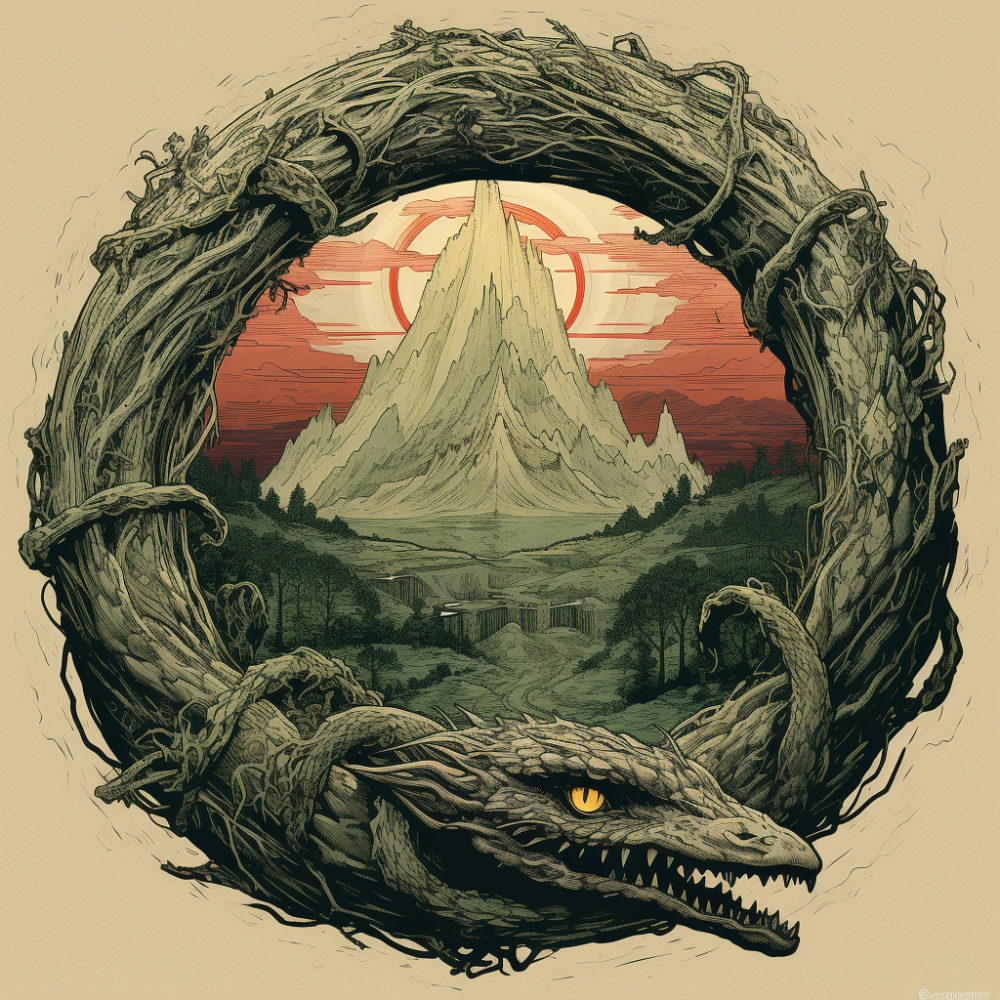
14. The Noose
The noose is a symbol that evokes fear and terror for several reasons. It is closely associated with death by hanging, which historically has been used as a method of execution. It also has strong associations with suicide. Its presence can elicit deep emotions and distressing thoughts related to self-harm and ending one’s life. This connection to suicide contributes to the fear and unease that the symbol of a noose generates.
But the symbolism of the noose does not stop at that. It carries a much more eerie meaning rooted in the history of racial terrorism and oppression. Lynching, which involved the use of nooses to brutalize and terrorize Black people, has left a lasting impact on society. The appearance of a noose is considered a hate crime in some states, reflecting the recognition of its racially charged nature. It symbolizes a dark chapter in history when racial discrimination and injustice prevailed, causing immense suffering and loss of innocent lives.
15. The Cross
In ancient times, the cross had a simple meaning: an instrument of execution. It is capable of inflicting the most agonizing and torturous death imaginable. Crucifixion involved tying or nailing a person to a wooden cross, leaving them to suffer until their demise. The word “excruciating” itself originates from the literal meaning of “out of crucifying.” However, the significance of the cross has been completely transformed because of Christ and His crucifixion.
In Christianity, the cross symbolizes the convergence of God’s love and justice. Jesus Christ is referred to as the Lamb of God who takes away the sins of the world. This reference dates back to the Jewish Passover in the book of Exodus, where an unblemished lamb’s blood protected those who applied it to their doorposts from the Angel of Death. When John the Baptist saw Jesus, he declared, “Behold, the Lamb of God, who takes away the sin of the world!” This identification points to God’s plan for Jesus to be sacrificed for the redemption of sin.

16. Extinguished Candle
Candles hold a significant place in spiritual and religious practices, representing one of the 4 essential elements. Lighting a candle establishes a strong connection to the divine realm, creating a pathway between the physical and the unseen. With its flame, a candle carries the essence of light, illuminating the material world and also the ethereal plane.
As soon as the flame is snuffed out, the light fades away, symbolizing the conclusion of a cycle or the passing of life. In various rituals and ceremonies, extinguishing a candle is often associated with closure, letting go, and the finality of certain phases or experiences. It is a visual representation of the end of a journey for the transition into a new, probably better chapter. The act of blowing out a candle is also a symbolic gesture of releasing something that has fulfilled its purpose or reached its natural conclusion.
Not just that, when extinguished, the smoke of the candle is released to the sky, carrying the wishes and prayers to higher powers, where it will be fulfilled.

17. The Mirror
Mirrors have long held a position of dread, confusion, and eerie fascination in our collective psyche. Superstitions surrounding mirrors can be found in cultures around the world, even in modern horror cinematic works thanks to the long-held belief that mirrors can connect the human world with the spirit world.
For instance, in many countries, mirrors in sickrooms are covered to prevent the soul from being lured away from the ailing body, while in other traditions, mirrors are cloaked after a death to deter lingering spirits. Ancient Chinese mythology even suggested that reflections in mirrors were actually deceitful demons masquerading as our own images, silently plotting our demise.
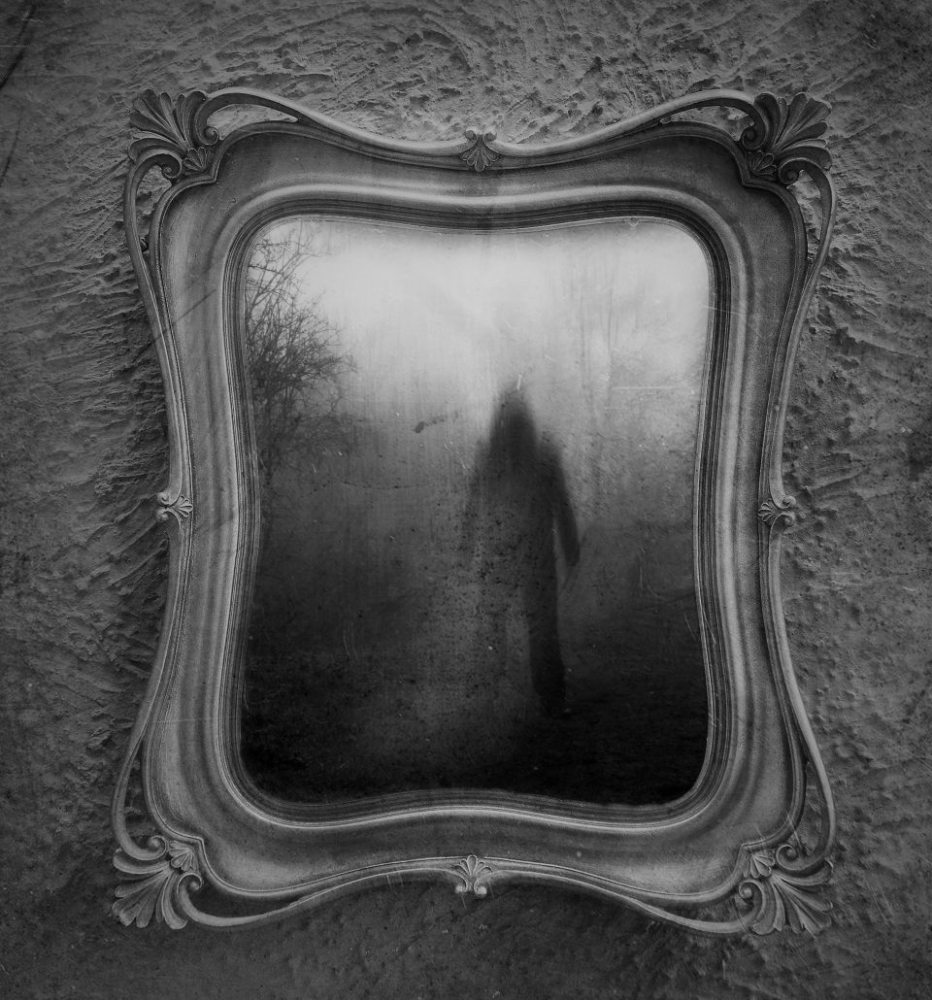
The myth of Narcissus, who met his demise by gazing at his reflection, adds another layer to the symbolism of mirrors. Some variations of this tale attribute a similar fate to Adam, who lost his divine nature upon fixating on his own reflection in a pool of water. Here the mirror becomes a fitting metaphor for the Genesis story, symbolizing the moment humans gained self-awareness and faced the realization of their mortality.
The concept of a reflection as a separate entity with continuity beyond death would have had profound implications for early humans. It provided them with a sense of continuity and the hope of an afterlife. The reflection disconnected from the physical body probably was seen as a spiritual essence that could persist beyond their death.
As communities and cultures developed, these early beliefs surrounding reflections likely evolved and intertwined with other religious and spiritual ideas. Reflections may have become associated with concepts such as the soul, the divine, or even the duality of human nature. Various rituals and practices may have emerged to engage with or protect these reflections, leading to superstitions and taboos related to mirrors and reflective surfaces.
18. The Snake
Snakes symbolize not only death but also the duality of life and death. They are terrifying creatures that can bring end to a human’s life with 1 single bite, but that very venom could also save our life if used the right way. The snake has long been associated with the ancient Greek God of medicine, Asclepios, and was regarded as a benevolent creature capable of healing through mere touch.
Their connection to poison and death has given rise to fields like toxicology, while carrying a metaphysical undertone. As creatures that dwell on the ground and can cause death, snakes symbolize the link between the earthly and the underworld realms. The snake’s ability to shed its skin symbolizes the cyclical nature of life and the spirit of renewal.
Read More: Snake Symbolism Around The World and Cultures
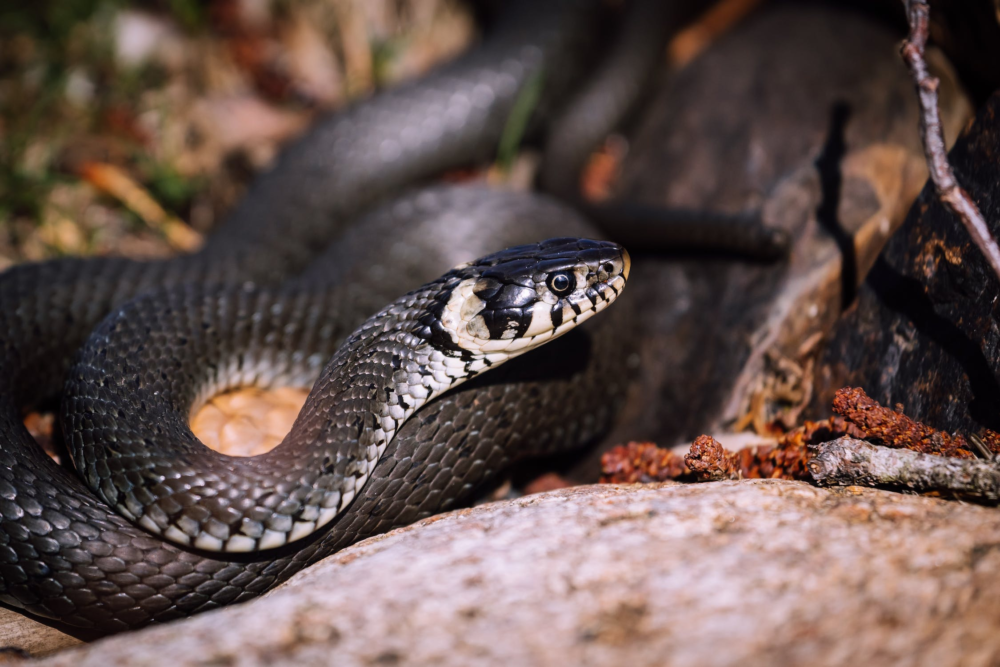
Snakes and serpents have also been depicted as powerful protectors of temples and sacred spaces, guarding souls in their eternal slumber. This association likely stems from the observation that certain snakes, like rattlesnakes or cobras, are known to hold their ground when threatened. Rather than retreating, they first display threatening behavior and then engage in battle, making them natural guardians of valuable treasures or immovable sacred sites.
In Angkor, Cambodia, there are numerous stone sculptures portraying hooded multi-headed nāgas as guardians of temples and other areas. A popular motif among Angkorean sculptors starting from the 12th century CE is that of the Buddha in a meditative pose, supported by the coils of a multi-headed nāga. The nāga’s flared hood also acts as a protective shield from above. According to the tale, as the Buddha meditated beneath a tree, Mucalinda emerged from the tree’s roots to shield him from an impending storm.
19. Rotting Flesh
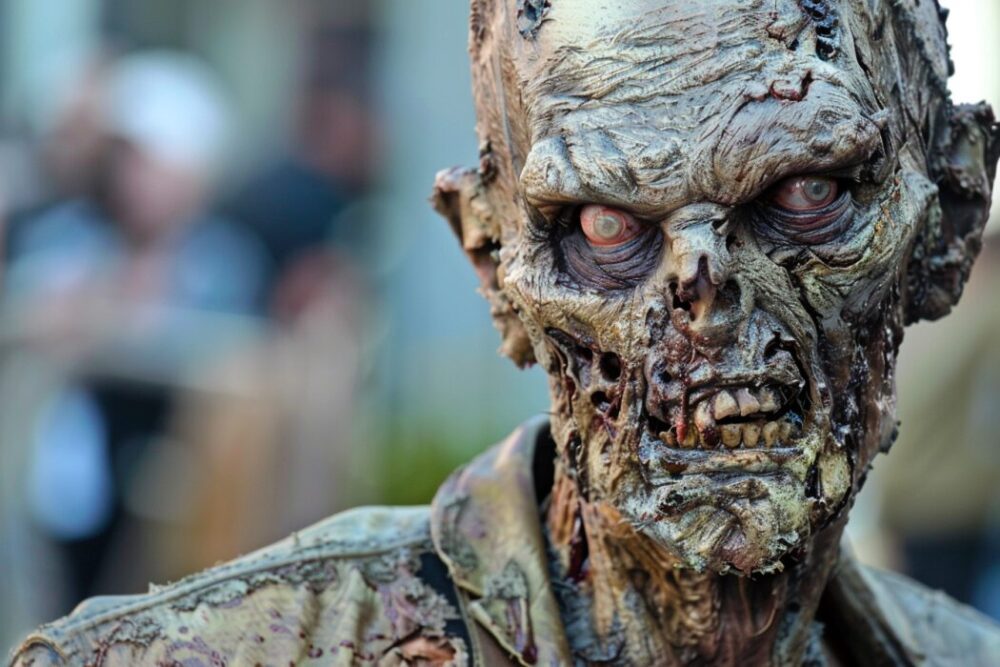
Rotting flesh is a powerful symbol of death due to its association with the decay and decomposition of the human body.
An interesting cultural manifestation of rotting flesh is the concept of zombies. In ancient cultures such as those in Africa and Haiti, the belief in zombies emerged as part of their spiritual and religious practices. Zombies were seen as reanimated corpses, often under the control of a sorcerer or witch. These zombies were believed to be devoid of free will, existing only to serve their masters. The connection between rotting flesh and zombies lies in the physical deterioration of the body after death, creating a ghastly, unsettling image of the walking dead.
In modern culture, zombies have become a prominent figure in literature, movies, and television. The popularity of zombie-themed media, such as the iconic “Night of the Living Dead” series, has solidified the association between rotting flesh and the undead. The depiction of zombies as mindless, decaying creatures with a never-ending hunger for human flesh has become a staple of the horror genre.
20. Blood
The association between spilled blood and death has been observed since ancient times, dating back to prehistoric periods. Many ancient civilizations had creation mythologies involving conflicts between deities or opposing forces, resulting in bleeding wounds of dying Gods. Their blood would become the source of new generations of God and life, symbolizing the never-ending cycle of life and death.
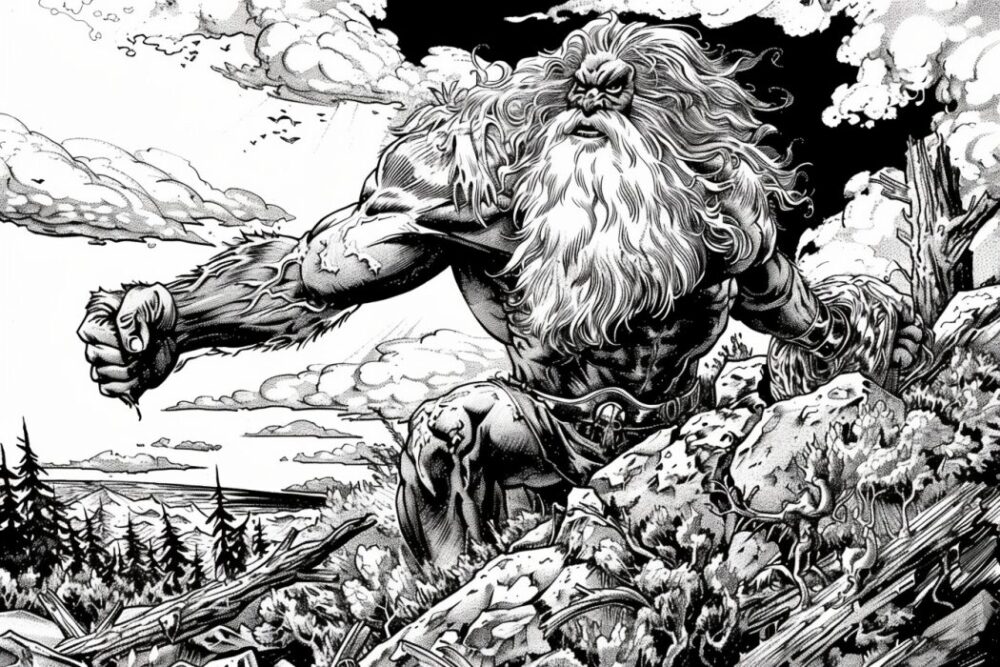
For example, the Norse creation myth, the primordial giant Ymir was slain by the gods, and from his body, the world was formed. The blood of Ymir flowed like rivers, and it gave life to the first generation of gods, known as the Æsir.
This connection between blood sacrifice and the power to rule or make decisions has persisted throughout history. In certain regions of Africa ruled by dictators and in African and South American cultures practicing Voodoo or similar beliefs, there are instances where human sacrifices may have been offered to spirits or their representatives.
This enduring association between blood, sacrifice, and power reflects the deep-seated beliefs and rituals of various cultures throughout time. The act of spilling blood symbolizes the ultimate sacrifice and holds significance in the context of life and death. It represents the interconnectedness of spiritual and earthly realms, as well as the belief in the exchange of vital energies through these rituals.
21. The Black Butterfly

The black butterfly holds significant meanings, with death being one of the most commonly associated symbols. It is also known as the “death” butterfly. However, it’s important to note that the black butterfly is not always considered a negative omen. In fact, it carries a rather uplifting message, representing the beginning of something new and fresh. This butterfly embodies the dual meanings of black and yellow, combining both colors’ symbolism.
The symbolism of the black butterfly is rich and diverse, encompassing various emotions and narratives. It is often linked to themes of death, madness, fear, and darkness. However, in several cultures, black butterflies are also seen as symbols of rebirth and hope. Their black wings are associated with transformation and the transition between different stages of life. In certain belief systems, these exquisite creatures are even believed to bring good luck or serve as signs of positive things to come.
Read More: Butterfly Symbolism Around The World
22. The Wanning Moon
The waning moon is the final moon phase. At this point, the Moon is barely illuminated by the Sun, and only a tiny fraction of it is lit up by direct sunlight. It is a time to embrace surrender and gentleness and getting ready for renewal, retreat, and rest. Although the wanning moon is not directly associated with death, it does symbolize endings as well as a sense of darkness and eeriness. You can see how many Halloween landscape painting includes a wanning moon, which aligns with the Halloween spirit – a time when the veil between the living and the spirit world is thinnest.

23. The Funeral
Funeral rituals serve as a public and symbolic way for us to express our beliefs, thoughts, and emotions surrounding the death of a loved one. These ceremonies have a deep historical significance and are filled with meaningful symbols. They play a crucial role in helping us come to terms with the reality of death, honoring the life of the deceased, and providing a culturally appropriate outlet for grieving. Funerals also offer support to those who are mourning, allow individuals to draw upon their faith and beliefs about life and death, and provide a sense of continuity and hope for the living.
24. The Plague Doctor
During the second major outbreak of the bubonic plague, known as the Black Death, in Western Europe, the plague doctor came into prominence, and it has retained its symbolic meaning as a both a savior and a messenger of death in Western culture. These doctors were employed by cities to provide medical treatment to victims of the disease, regardless of their ability to pay. Their services were particularly essential for the impoverished population who couldn’t afford healthcare. However, in present times, the plague doctor costume has taken on a different significance. It has become a popular choice for Halloween costumes and is often associated with symbols of death and disease, representing the eerie and sinister aspects of the past.

25. Phoenix
According to legend, the phoenix is a unique bird that can only exist one at a time. After 500 years of life, it builds a nest and sets itself on fire. From the ashes, a new phoenix emerges, stronger and renewed, symbolizing hope and rebirth.

While the phoenix itself is a mythical creature, historians believe it drew inspiration from real birds such as the eagle, hawk, crane, flamingo, or peacock. One theory suggests that flamingos, known for nesting in hot salt flats, inspired the phoenix myth. The heat reflecting off the water made their nests appear like they were on fire. The peacock, with its similar size and vibrant colors, has also been associated with the phoenix in Chinese folklore.
Another bird comparable in size to the phoenix is the eagle, although their colors differ. Some eagles possess blue and purple feathers, resembling the hues of the mythical bird. More than just a symbol of life and death phoenix represents transformation and the ability to rise again after adversity and start anew.
26. Crows & Ravens

Crows and ravens hold rich symbolic meanings in a wide variety of cultures. They acquired mythical status due to their connection with consuming the flesh of dead animals, being scavenging birds themselves. This symbolizes the role as mediators between life and death.
Celtic folklore associates ravens with the goddess Morrigan, who represents death and war, while in Welsh mythology, they are linked to the warrior god Brân the Blessed. Central Asian folklore considers ravens as evil spirits of death, war, and violence.
27. Scythe
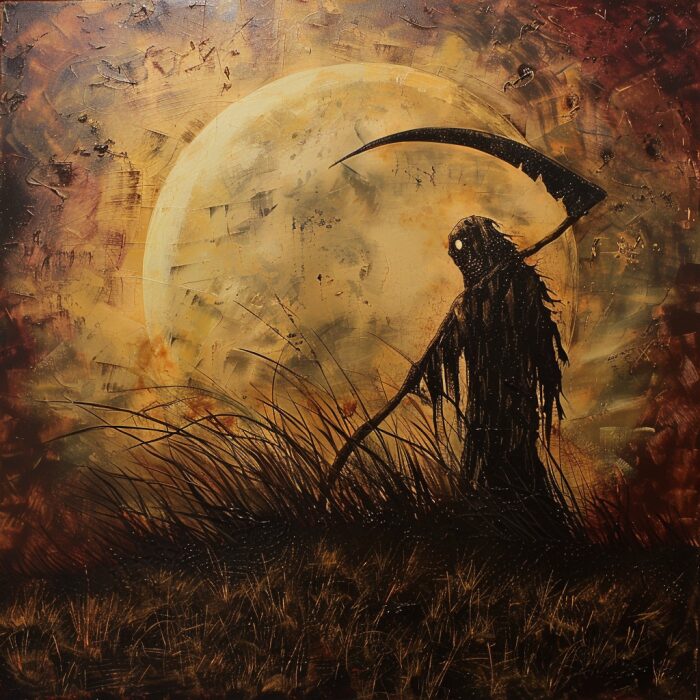
Its curved blade and long handle have been traditionally associated with the image of the Grim Reaper, a personification of death. As an agricultural tool used for harvesting crops, the scythe symbolizes the cycle of life and the inevitability of death. The scythe’s sharp blade, capable of cutting down crops with ease, also represents the swift and decisive nature of death, capable of severing the thread of life without warning.
However, from a more light-hearted perspective, the scythe cuts down the old and withered crops is simply paving the way for new growth and rebirth. For new beginnings to occur, old patterns and attachments must be released. Just like any other symbols of death, the scythe carries with it the hidden meaning that endings are just new beginnings.
28. The Color Black
Black is often associated with death, misfortune, and the presence of evil spirits. Its ominous nature evokes feelings of sadness and distress. Due to its negative connotations, many people shy away from this color, fearing that it may bring unhappiness into their lives. While black does not intentionally intimidate, its dark essence does not typically inspire positivity.
29. Poppy
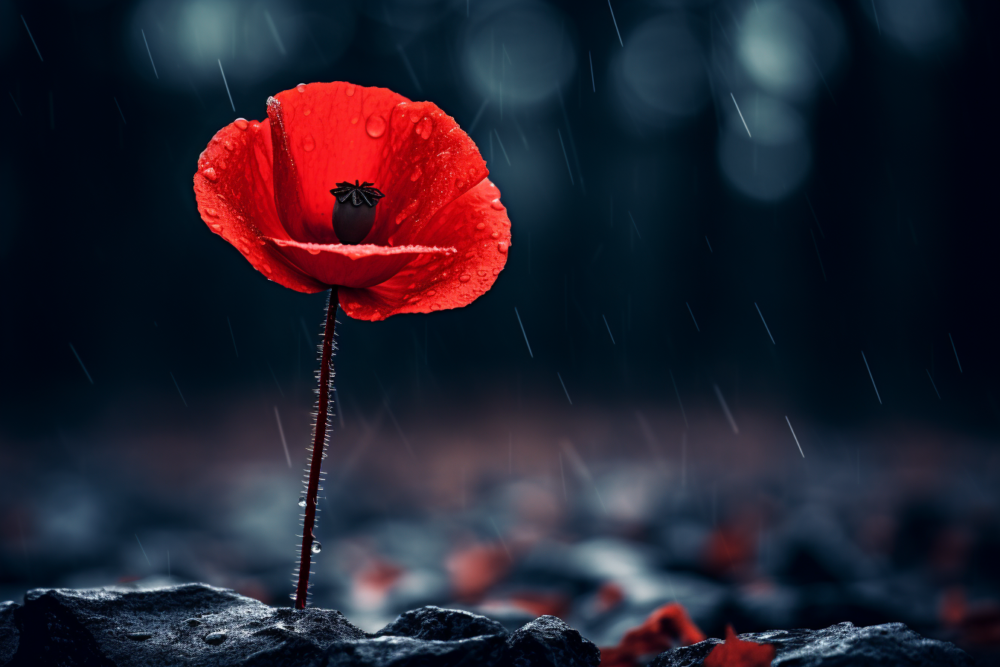
The red poppy flower has become a symbol of remembrance for military service due to its rich cultural significance. The association between poppies and remembrance dates back to ancient times when these flowers were placed on tombstones to symbolize eternal sleep and consolation in death. However, the specific connection to fallen soldiers emerged in the aftermath of significant historical events.
After the devastation of the Napoleonic wars in the early 19th century, the desolate and infertile lands miraculously sprouted red poppy flowers around the bodies of fallen soldiers. This transformation turned poppies into a symbol of hope, peace, and the belief that the sacrifices made by soldiers served a greater good.
30. Stairway to Heaven
The stairway leading to heaven has always been a more positive symbol for the journey to the world beyond our physical existence. Instead of being taken away by an ominous being, the stairway to heaven allows humans to gently ascend to a new world of peace and happiness. It also represents the individual’s journey towards spiritual enlightenment, transcendence, and union with the divine.
Examples of the stairway to heaven symbolism can be found in various religious and mythological traditions, such as Jacob’s ladder in Judeo-Christian tradition, the celestial staircase in Islamic tradition, the myth of Bifröst in Norse mythology, and the concept of Meru or Mount Kailash in Hindu and Buddhist cosmology.
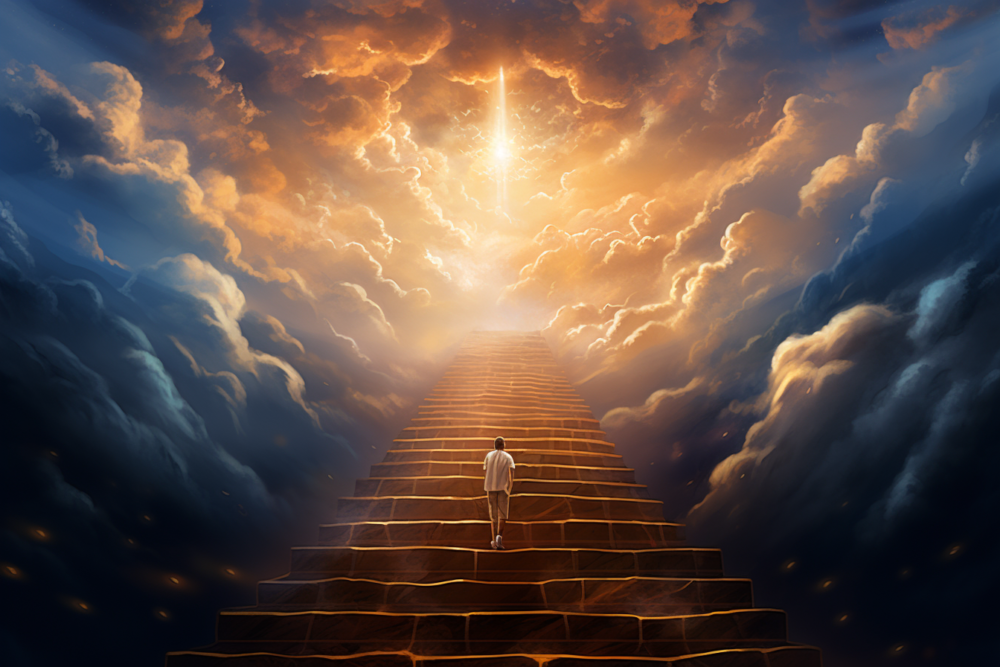
Conclusion
In conclusion, symbols of death are deeply ingrained in cultures around the world, representing the impermanence of life, the inevitability of mortality, and the profound impact that death has on individuals and communities. From the somber black color to the mysterious raven and the transformative scythe, each symbol carries its own unique significance and interpretation. They all carry the idea that death is not to be feared, and we should embrace it as an ending of a period for a new beginning to unfold.
